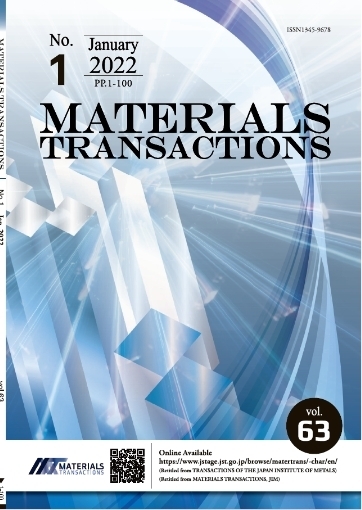Preparation of Nanoporous Palladium by Dealloying: Anodic Polarization Behaviors of Pd-M (M=Fe, Co, Ni) Alloys
Masataka Hakamada, Mamoru Mabuchi
pp. 431-435
抄録
Anodic polarization behaviors of Pd-M (M=Fe, Co, Ni) alloys in H2SO4 solution are investigated for the preparation of nanoporous palladium by dealloying. For Pd0.2Co0.8 alloy, the current monotonically increased with the increase in potential. However, anodic polarization curves for Pd0.2Fe0.8 and Pd0.2Ni0.8 alloys showed passive regions at high potentials, although the standard electrode potentials for Fe, Co, Ni are similar. As a result, nanoporous Pd was successfully fabricated via electrolysis under a constant potential (=+0.5 V vs standard calomel electrode) only when the starting alloy was Pd-Co. Passivation, as well as standard electrode potentials, must be considered for the efficient production of nanoporous Pd. The preparation of nanoporous structure on the surface of bulk Pd was also demonstrated using alloying/dealloying process involving Co electrodeposition, thermal alloying and subsequent dealloying.
他の人はこちらも検索
MATERIALS TRANSACTIONS Vol.49(2008), No.1
MATERIALS TRANSACTIONS Vol.49(2008), No.10
MATERIALS TRANSACTIONS Vol.49(2008), No.10










